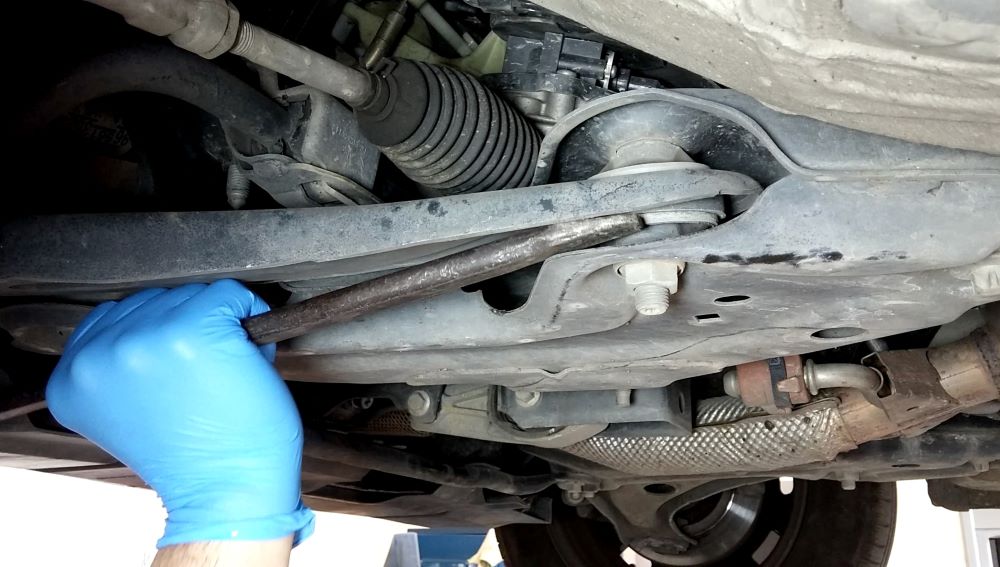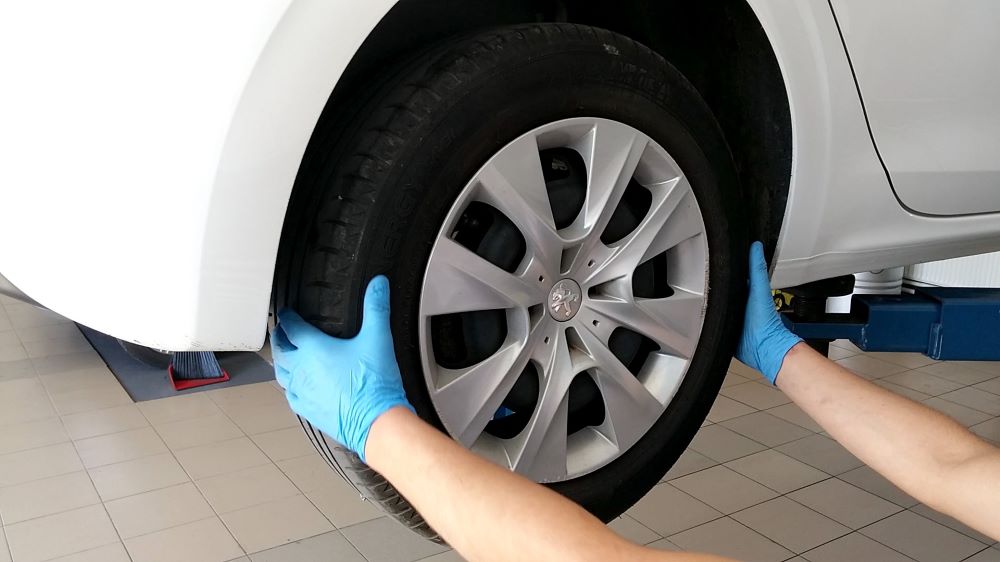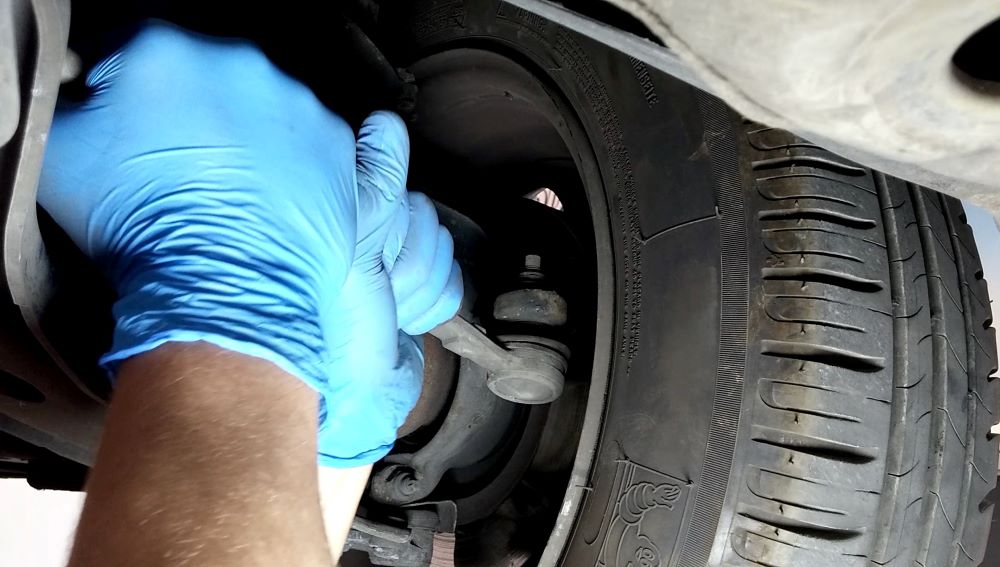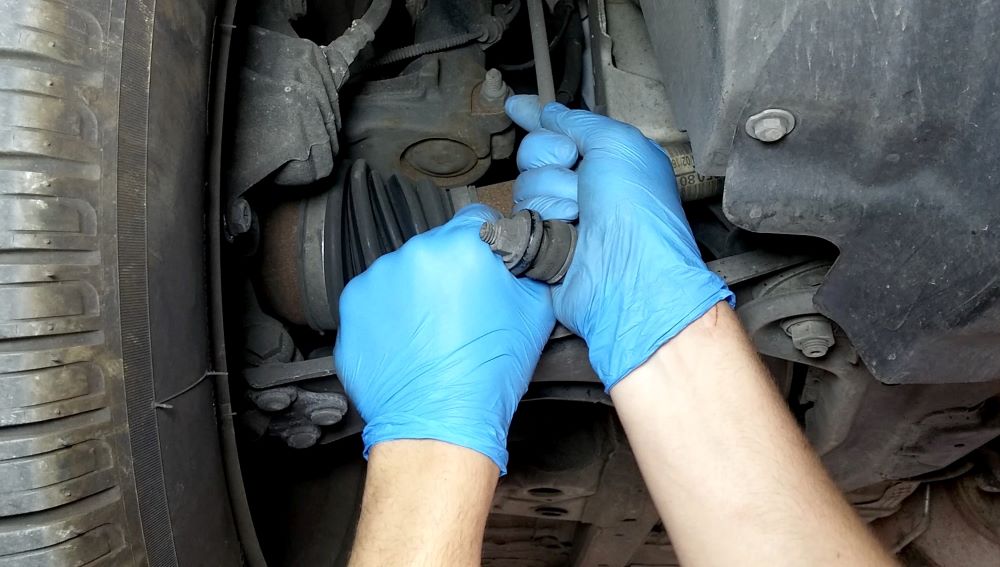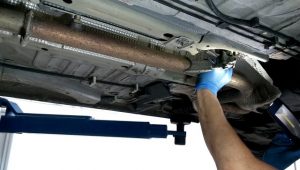Under vehicle inspection
With every oil change, emergency service or repair recommended a detailed inspection of the vehicle. Many systems under the vehicle must be corrected for safety reasons. The under-vehicle inspection is a systematic visual inspection of the control system, suspension, exhaust, and braking. From this position, leaks can be detected in the engine, transmission, tank, and brakes. Also, an overview of the condition of the chassis because it is most exposed under the vehicle due to various mechanical and chemical influences during the operation of the vehicle.
When the vehicle is safely lifted on a hoist, an under-vehicle inspection is a good way to see the general condition of the vehicle. Additional areas of concern will often be found during the inspection.
The inspection of the vehicle is performed in detail, following the procedure of inspection and checking the condition of the elements of different systems.
The front of the vehicle is first inspected, which includes the wheels, steering system, front suspension, engine and transmission leaks.
The condition of the exhaust system, fuel lines, brake lines and parking brake cable is then checked.
Finally, the rear part is inspected, which includes the rear wheels, suspension, tank condition and, if the vehicle is rear-wheel drive, its power transmission elements from the engine to the rear wheels.
During the entire inspection, the condition of the chassis for damage and rust is visually determined.
Wheels:
Check that there is no axial movement of the wheels and the condition of the bearings.
The steering:
Inspection of the steering system part under the vehicle includes the tie-rods and tie-rod ends, idler and pitman arm and steering rack.
Front-wheel drive axle:
This inspection includes the constant, velocity joints (CV joints) and dust boots. Look for cracked, torn, or leaking boots.
Suspension:
Check front and rear shock absorbers, suspension elements and springs.
Engine:
Check for coolant, oil and fuel leaks. Inspect for cracked or damaged engine mounts, coolant hoses, and belts.
Transmission:
This review includes the gearbox housing, clutch housing, external connections and connectors. In the transmission area, check for fluid leaks, loose bolts, and damaged or lose clutch mechanisms or gear levers.
Exhaust system:
It may be necessary to tighten the clamps and bolts on the exhaust system or the exhaust line with bolts or brackets. Check for signs of exhaust leakage, corrosion or deterioration, including hangers. Check the condition of each heat shield.
Pipes and hoses:
Inspect the condition of the brake hoses and fuel lines for bends, pinches, rust, and leaks. Determine if the condition of the holders and supports of the pipes and hoses are in place.
Parking brake cables:
Check for rusted, frozen, broken, or crushed cables.
Rear-wheel drive:
The drive axle transfers the drive from the transmission to the rear axle of the vehicle (rear-wheel drive). Check for any loose movement in the driveshaft universal joints. Look for any dents or distortions in the shaft. The rear axle includes a differential and rear axle. Look for leaks around the differential and the condition of the oil seal and protective rubber covers.
Fuel tank:
The fuel tank can be made of metal or plastic, depending on the vehicle. The inspection should include the filling pipe and hose, ventilation and fuel delivery hoses, tank belts and protective shields. The fuel tank must be safe and inspect the fuel lines for damage or corrosion.
To perform an under-vehicle components inspection, follow these steps:


